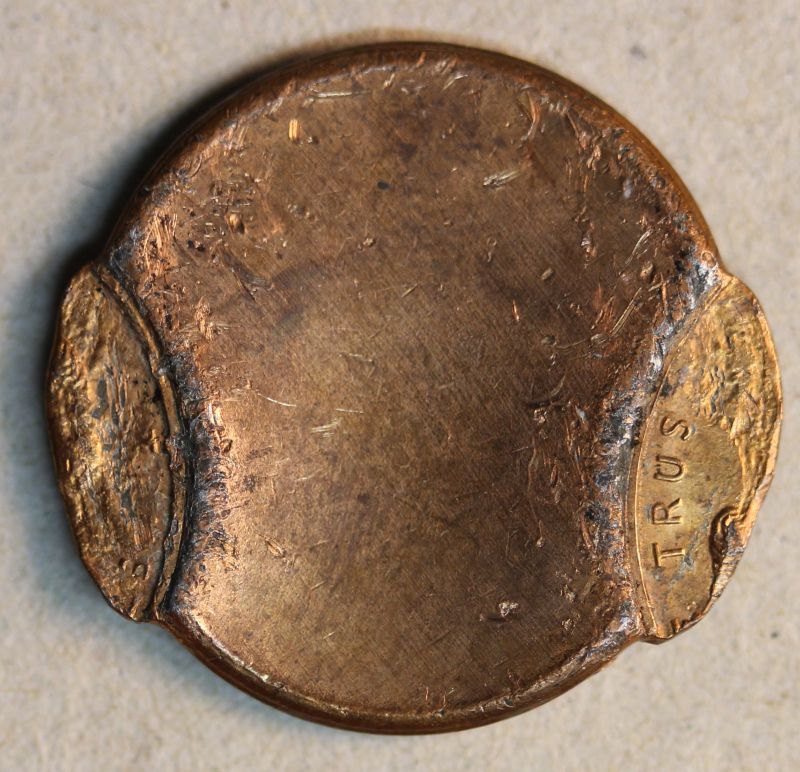PART VI. Striking Errors:
Saddle Strikes:
Inverted hump
Definition: A saddle strike in which the hump or saddle buckles toward the reverse die.
In almost all saddle (tandem) strikes, the unstruck interval between the two off-center strikes buckles toward the hammer die, which is usually the obverse die in such errors. Buckling toward the reverse die can be an indicator of an inverted die setup (reverse die as hammer die). In cents, this is a factor only for those struck after after 1996 (or possibly 1995). The earliest unmistakable evidence for cents being struck with inverted dies appears in 1997. Inverted dies appear earlier in other denominations (as early as 1992 quarter dollars). At least one indisputable example of a saddle-struck cent generated by inverted dies is known (a quad-struck 2000 cent).
The other reason for buckling toward the reverse die is a rare reversal of the usual tendency. In other words, and for unclear reasons, the hump will bulge toward the anvil die. This reversal of the usual hump direction presumably depends on the collar being in an unusually depressed position; otherwise, it will impede the growth of the hump.


This rather battered, undated cent shows a hump pointing in the direction of the reverse die. In the absence of a date or any indicator of collar location, it’s impossible to say whether the inverted hump indicates an inverted die setup (reverse die as hammer die) or a rare instance of warping in the direction of the anvil die. Both faces of each off-center strike display roughly-textured struck-through areas.


This saddle-struck quarter dollar shows a hump that points toward the reverse die. The relatively high relief and lack of detail of Washington’s head indicates it was struck long before the modern introduction of the inverted die setup. It was most likely struck in the San Francisco Mint between 1965 and 1967. Other saddle-struck quarters from this same time period show a hump that points toward the obverse die. So it’s likely that the inverted hump on this specimen is due to a rare instance of warping toward the anvil die. Very few saddle-struck quarter dollars are known, and they may represent a short-lived experiment in adapting a dual or quad press for a denomination larger than a nickel.